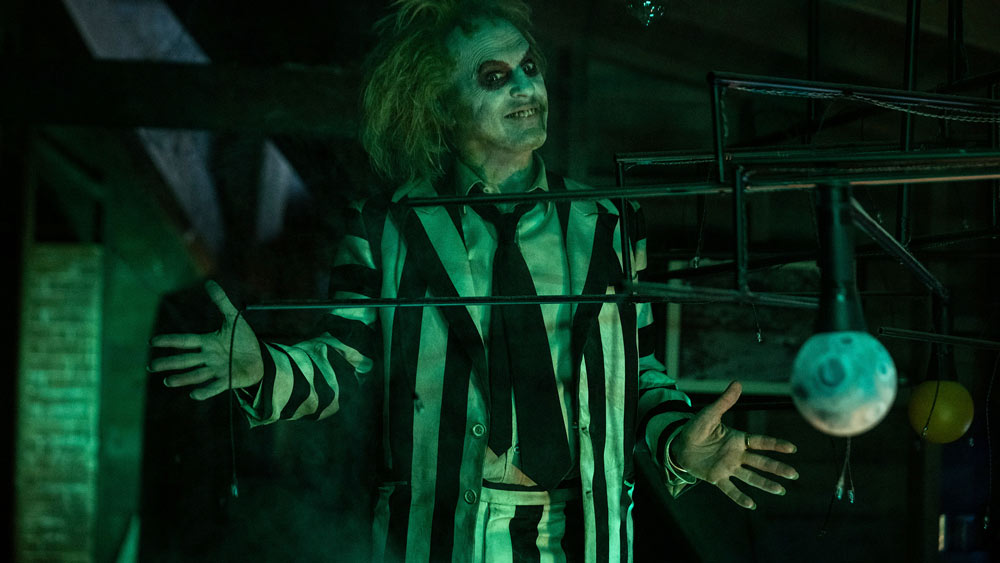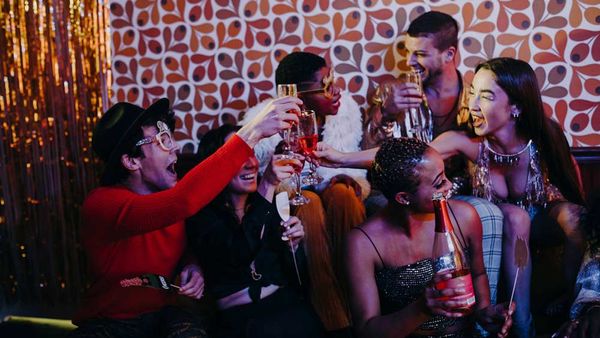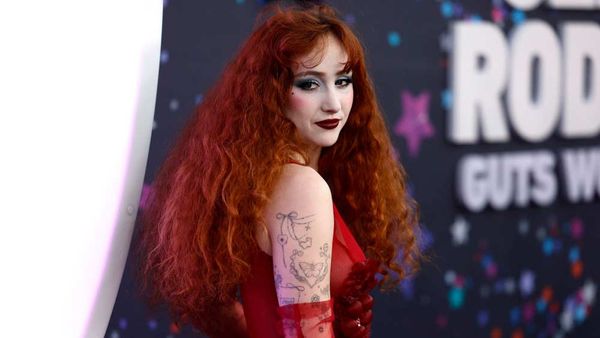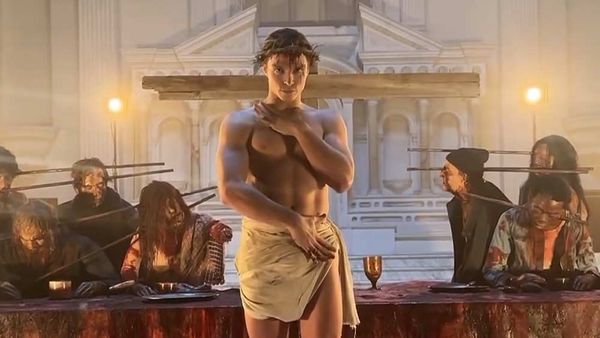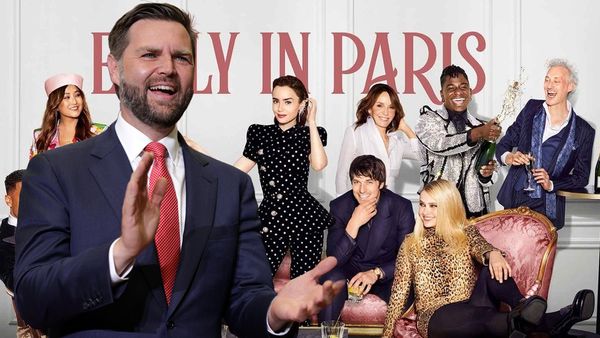
March 12, 2017
Glamorous Moments with the Trocks
Paul Parish READ TIME: 4 MIN.
The Ballets Trockadero de Monte Carlo had a smash opening night at ZBH in Berkeley last Friday. Last seen here nine years ago, this drag troupe burlesques everything ballet-lovers hold most dear, and every role, including those danced on pointe, is performed by a man. The Trocks have thrived, their fortunes mirroring those of the LGBTQ community. As taboos melt, as once-formidable boundaries become semi-permeable membranes, and the laws have made room for us, the Trocks have recruited dancers trained in the great schools of Cuba, Italy, Hungary, and gained virtuosi who like American freedoms and enjoy dancing on pointe. Moreover, they have the temperaments, physiques, and training to perform at Olympic levels.
This means that the quality of the comedy has changed. From their origins as an outgrowth of Charles Ludlam's Ridiculous Theatrical Company, they've arrived at a point where what had seemed tragically impossible is now quite do-able. It's not as preposterous as it once was. In the finale of the Trocks' "Don Quixote" Friday night, Alla Snizova (in "real" life the Cuban Carlos Hopuy) began turning her 32 fouettes with a quadruple pirouette - on pointe, of course. Not only that, "she" makes a perfectly respectable pretty girl. All the ballerinas, in fact, could be elected cheerleaders at Ole Miss on the basis of their looks. Yekaterina Verbosovitch (Chase Johnsey), who danced the Swan Queen in their version of "Swan Lake," has a stage-face that's a ringer for the Hollywood icon Janet Gaynor's ("A Star is Born"). The technique is superb: Johnsey was voted Best Male Classical Dancer in a British critics' award last year.
Fact is, both Hopuy and Johnsey are too small in their builds to have big careers as male dancers in the great companies. That doesn't apply to all of them. The Hungarian Laszlo Major has a huge virtuoso male technique and the staggering hunkiness of one of Mae West's back-up dancers, which we saw in the bare-chested, harem-pantsed role of the slave Ali from the Corsaire pas de deux.
As times change, they adapt. When the Trocks got started in the Stonewall era, their first object was preposterous attention to getting the look right. But there was an initial split within the group. Where the "Gloxinia" faction aimed at being a decorative art, the Trockadero faction aimed at parodying everything ballet-lovers cherish, including the dancing. Though they loved the glitter, the make-up, and the costumes, they aimed at getting all the lore in their sights. There was always a fastidious academic wit to it, like that of Tom Lehrer's songs, and in the sacred moments of the White Swan pas de deux, after camping up the group-dances in every conceivable way, they'd dance the duet straight, with pure style. They could be suddenly, heart-stoppingly beautiful.
From the beginning, the Trocks had a Shakespearean appeal to the broad and the high. The learned audience, the balletomanes, loved them, yet it wasn't necessary to know anything special to enjoy them. The popular audience loved them, too, as they loved Bugs Bunny's "Figaro." It's stayed that way. To this day, the Trocks can make their way on box-office receipts alone, with no subsidies from the NEA or anybody.
In their comeback after the 80s AIDS era, when they danced like there was no tomorrow - in fact, most of the dancers died - the Trocks have ventured into the exuberant side of ballet, and they have the dancers who can bring that off. They're dancing more Soviet-era showpieces, with their huge overhead lifts, feats of balance and turning, and high-energy, huge jumps.
This means they're keeping alive some ballets rarely seen. The learned aspect, a source of their continued popularity, is the hardest aspect of their DNA to explain. Nobody nowadays knows the story of the Hunchback of Notre Dame, on which their very successful Esmeralda pd6 is based. Few balletomanes know why Esmeralda is so reluctant to dance with her cavalier, nor why she seems to be seeing ghosts and wandering the stage like Luna Lovegood. But the audience loves her bizarre, tilted postures and her exquisite, flamingo-like steps. She's beautiful like Lillian Gish, and that's enough. As Balanchine asked, "How much story you want?" There is enough there for you to feel her pain.
The reason it works is that the Soviet ballets were designed to be popular. Stalin demanded that Soviet art "must be intelligible to Ivan [i.e, Joe Blow]," and Russian artists who didn't want to go to the Gulag made ballets as accessible as Disney's movies. So as Trock technique became stronger, with Russian training, they picked them up. There was all the melodrama to parody that any drag queen could want, plus injustice, heartbreak, young love.
Their version of the Corsaire pas de deux makes the one Nureyev brought with him when he defected look effete. In fact, they've muscled it up to a level I've never seen before. There's the obvious joke of Araf Legupski's double-biceps pose (and he kissed his muscles). But then his leaps and turns matched the level he was bragging about, and for the balletomane, it was LOL when he swapped a kneeling backbend for the supine, pelvis-lifted pose with which it usually ends.
The Dying Swan is the solo that made Anna Pavlova famous, and it's the Trocks' calling card. Their dancers each have a version of their own. In 1995 it was glamorous and svelte, though as she crossed the stage the dancer trailed feathers like a pillow coming undone. The feathers still fell last Friday, though this dancer, Helen Highwaters (Duane Gosa), who's African-American and came through the Ailey School, had a much more hectic attack, and added a down-home hissy fit to her last fluttering seizure. It could have been tasteless. Indeed, it was tasteless, but she made it work.
The show went over so big, they gave us an encore. Still in their Don Q costumes, they did a hora to "Hava Nagila." It was wonderful. I hope it won't be another decade before they come back to town.
